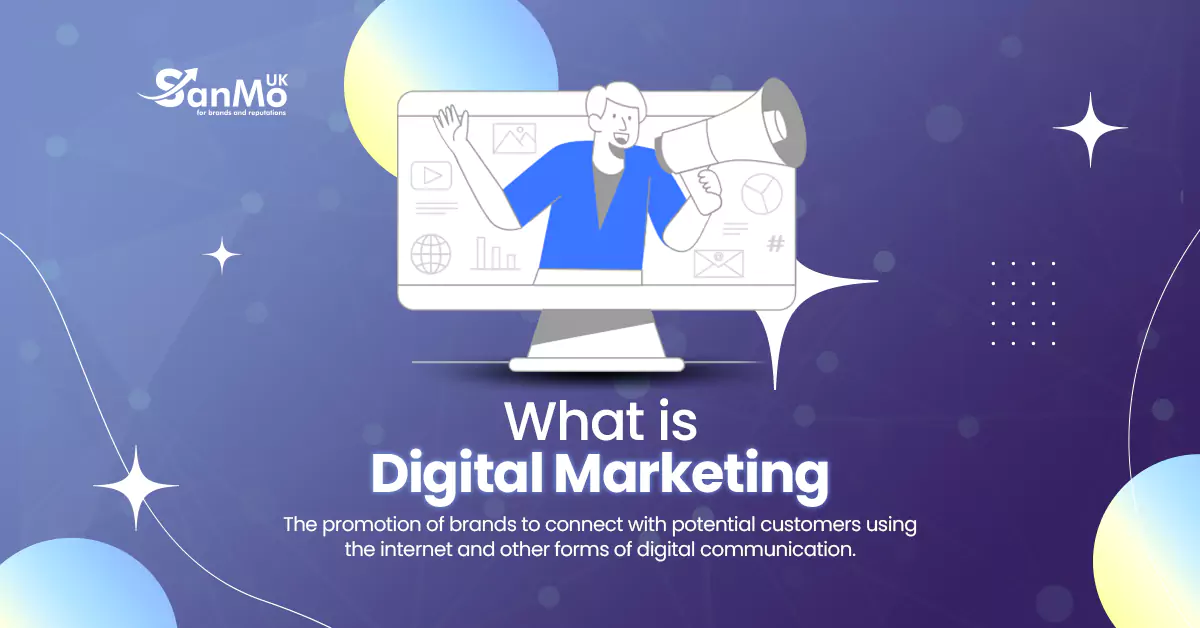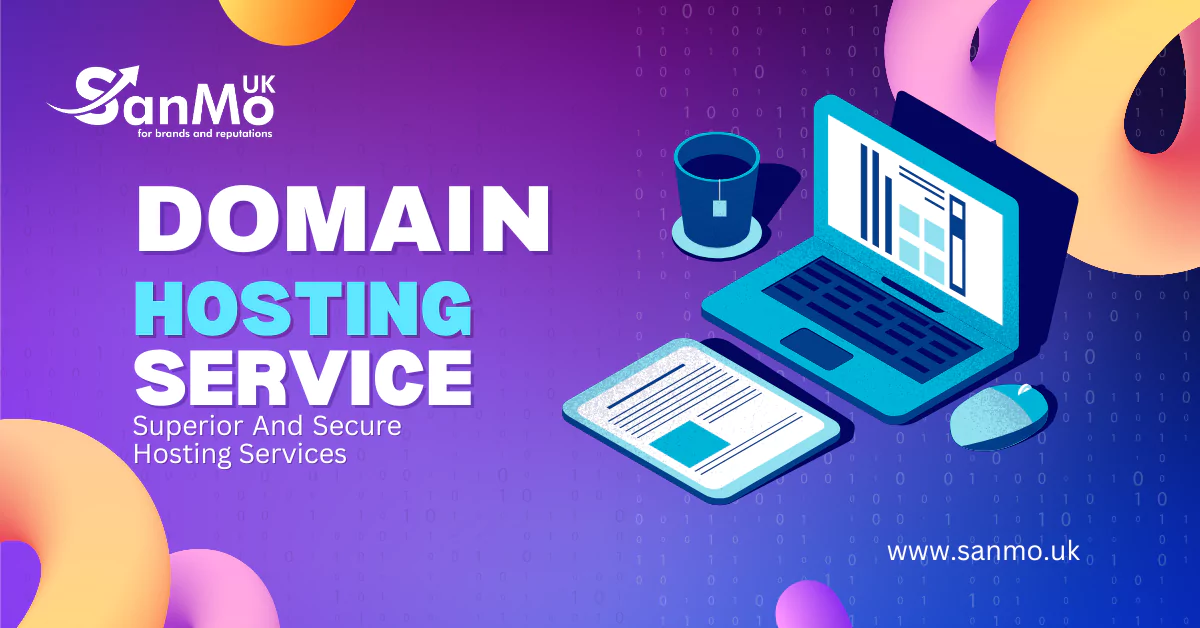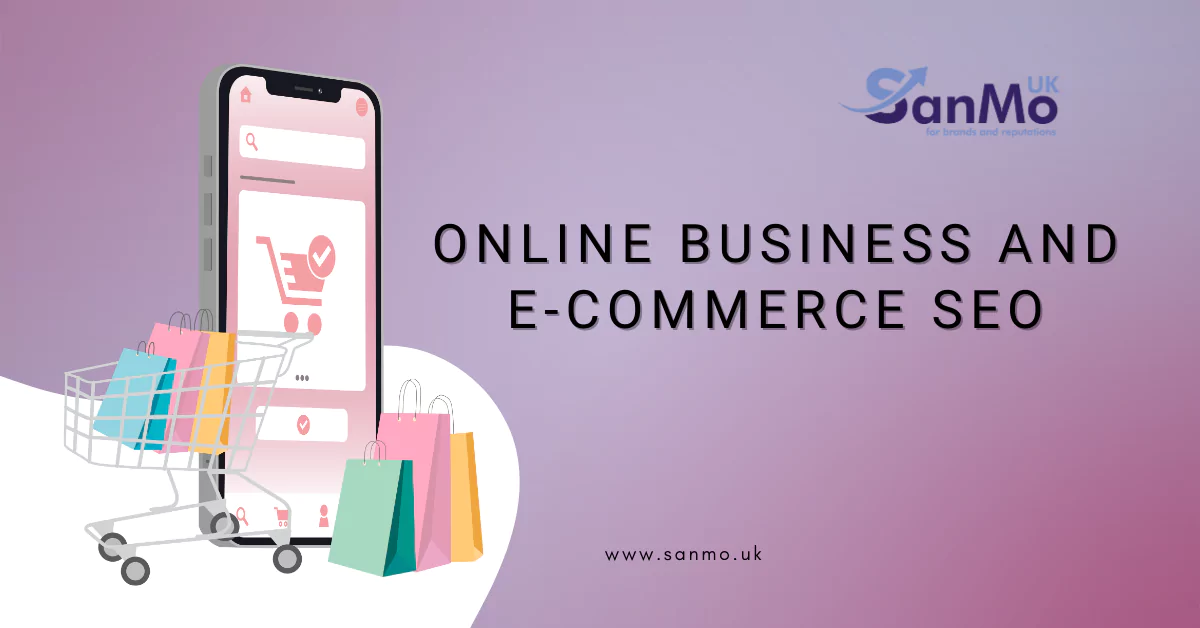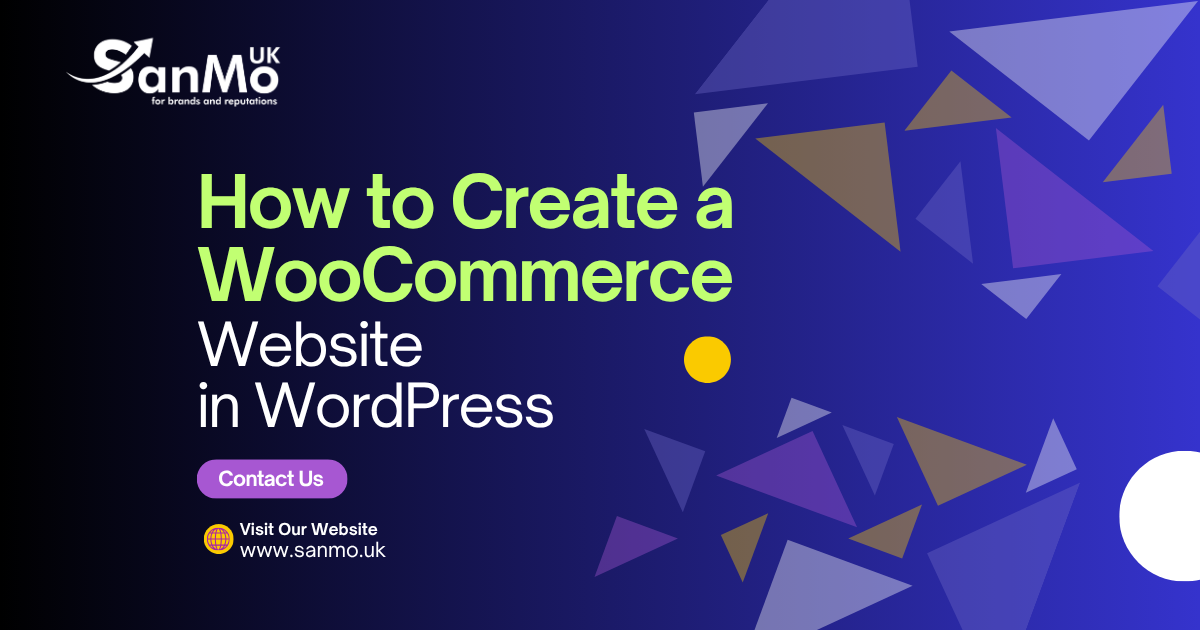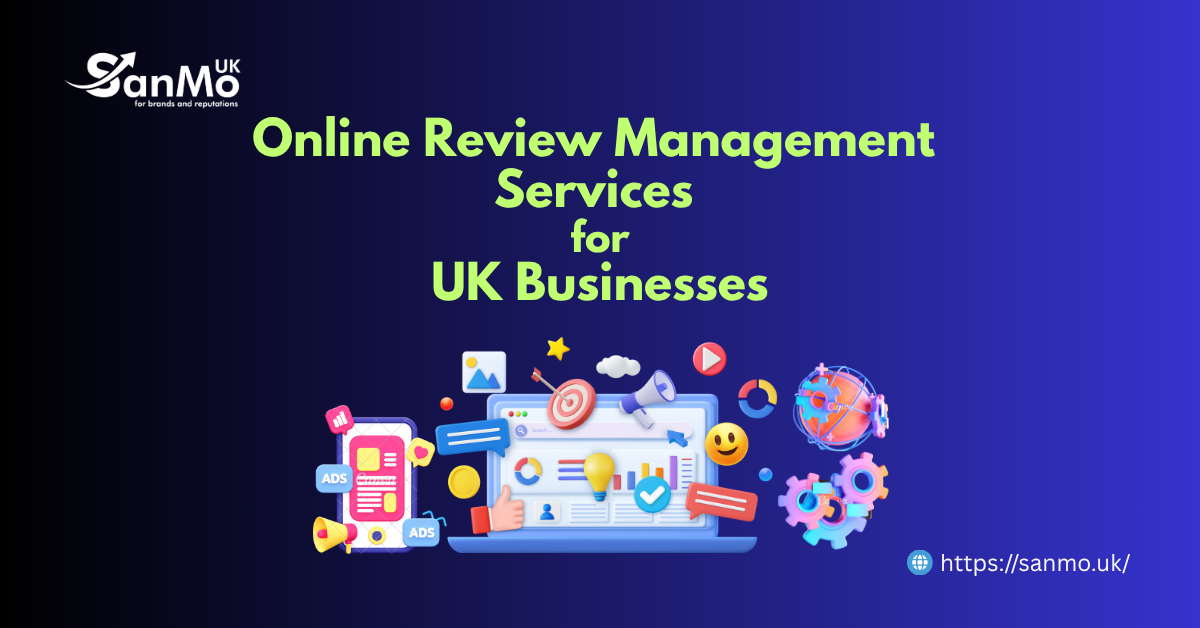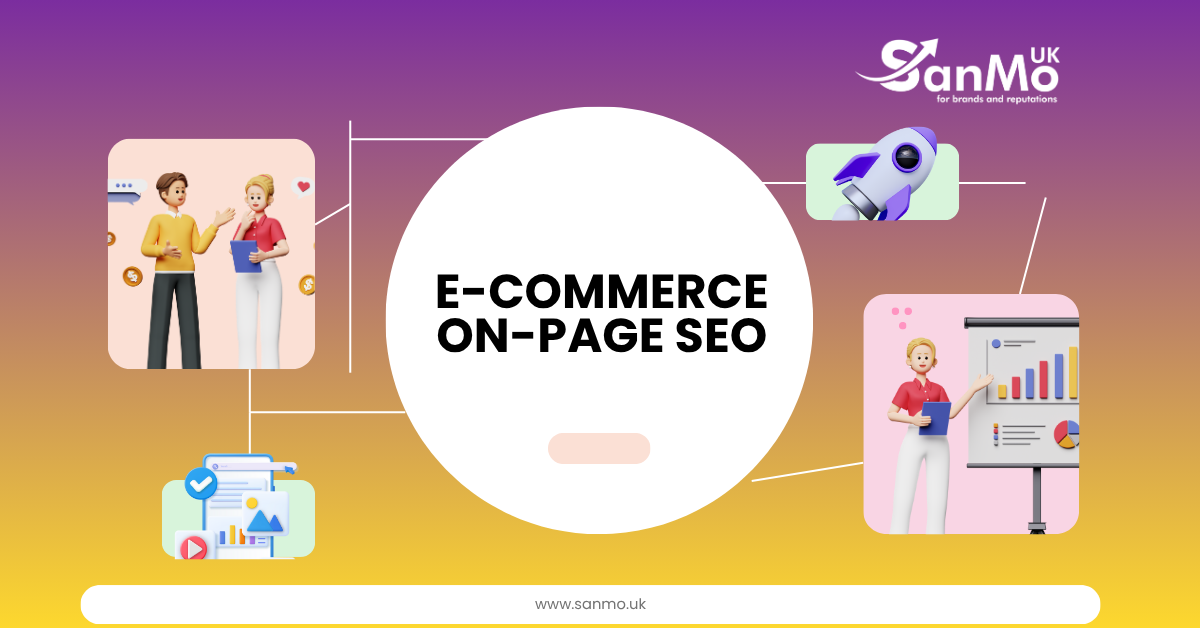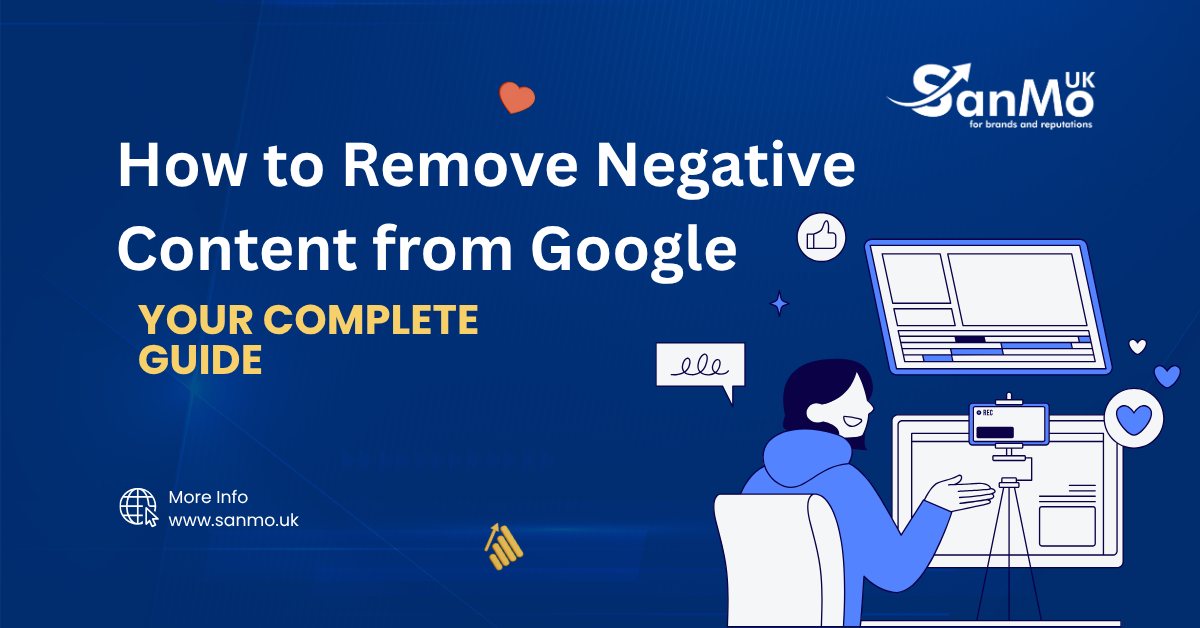In today’s computerized age, businesses require more than fair an online presence-they require a well-executed computerized promoting procedure that drives comes about. At SanMo we pride ourselves on conveying high-quality computerized promoting administrations that are outlined to offer assistance to businesses to develop, lock in with their gatherings of people, and accomplish computable success.
What is Digital Marketing?
In today’s interconnected world, businesses and customers depend intensely on advanced channels to communicate, execute, and share data. Computerized promoting has risen as a vital procedure for businesses to reach, lock-in, and impact potential clients. But what precisely is advanced showcasing, and how does it vary from conventional showcasing strategies? This comprehensive direct will break down advanced showcasing into its center components, investigate its benefits, and clarify why it’s fundamental for businesses in the 21st century.
Definition of Digital Marketing
At its center, computerized promoting alludes to the utilization of online stages, computerized advances, and internet-based instruments to advance and publicize items, administrations, or brands. Not at all like conventional showcasing, which depends on physical media like print, radio, or tv, computerized promoting leverages the web and electronic gadgets to interface with groups of onlookers.
It incorporates a extend of exercises such as look motor optimization (SEO), substance promoting, social media promoting, e-mail promoting, online promoting (PPC), versatile showcasing, and more. These techniques point to pull in, lock in, and change over potential clients utilizing focused on computerized substance and campaigns.
The Key Components of Digital Marketing
Digital Marketing envelops a wide assortment of techniques and apparatuses, each serving a diverse work in advancing a brand. Here are a few of the primary components:
1. Search Engine Optimization (SEO)
SEO is the preparation of optimizing your site or substance to progress its permeability on look motor comes about pages (SERPs) like Google, Bing, or Yahoo. The objective is to increment natural (non-paid) activity to your site by positioning it higher for important look queries.
SEO includes a number of methods, including:
- Keyword investigate: Recognizing well-known look terms related to your business.
- On-page optimization: Making strides in the substance, format, and structure of your website.
- Off-page optimization: Building backlinks and improving the website’s authority.
- Technical SEO: Guaranteeing your site is mobile-friendly, quick, and simple to explore.
2. Content Marketing
The goal of content marketing is to draw in and hold onto an audience by producing, disseminating, and publishing high-quality information. Building authority and credibility in your industry is the aim, since this may result in more leads, sales, and traffic. Because search engines favor relevant, high-quality information, content marketing, and SEO are frequently combined.
Examples of content marketing include:
- Blog posts
- E-books and white papers
- Videos and webinars
- Infographics
- Podcasts
Businesses may create a devoted following and cultivate enduring connections with clients by offering informative and interesting content.
3. Social Media Marketing
Using sites like Facebook, Instagram, Twitter, LinkedIn, TikTok, and others to sell your brand, interact with consumers, and increase website or online store traffic is known as social media marketing. Influencer collaborations, sponsored advertising, community development initiatives, and organic postings are some examples of social media marketing tactics.
Key benefits of social media marketing include:
- Direct interaction with consumers
- Brand awareness and visibility
- Increased traffic to websites
- Targeted advertising based on user demographics, interests, and behaviors
Because every social media site has different users and features, it’s critical to modify your strategy to play to each network’s advantage.
4. Email Marketing
One of the best digital marketing tactics is still email marketing, which provides a direct channel of connection with your target audience. In order to nurture leads, keep consumers, and advertise goods and services, it entails sending tailored emails.
Successful email marketing campaigns often include:
- Welcome emails for new subscribers
- Newsletters with updates, tips, and offers
- Promotional emails announcing discounts, new products, or events
- Abandoned cart reminders for e-commerce stores
Campaign automation, audience segmentation, and performance tracking are made simple by email marketing systems such as Hub Spot, Constant Contact, and MailChimp.
5. Pay-Per-Click (PPC) Advertising
Businesses may bid on particular keywords using PPC advertising and only have to pay when a user clicks on their ad. Because PPC advertisements appear at the top of search engine results pages or social media feeds, it produce results instantly, in contrast to SEO
PPC campaigns can be run on platforms such as:
- Google Ads: For search engine advertising
- Facebook Ads: For social media promotion
- Instagram Ads: To reach a highly visual audience
- LinkedIn Ads: Targeting B2B customers
Because you can target your adverts according to geography, demographics, behavior, and interests, PPC advertising provides highly tailored visibility.
6. Affiliate Marketing
Businesses use affiliate marketing, a performance-based approach, to collaborate with people (affiliates) who sell their goods or services in return for a commission. Affiliates can utilize social media, blogs, and websites to promote the brand and increase sales.
Because it enables firms to increase their reach with little initial investment, this strategy is especially well-liked in e-commerce and online shopping. Affiliates also gain from it as successful recommendations generate passive money for them.
7. Influencer Marketing
A fast-expanding area of digital marketing is influencer marketing, particularly in light of the popularity of sites like Instagram, YouTube, and TikTok. This tactic is collaborating with influencers—people who are well-known and have a sizable fan base in a certain industry—to market goods and services.
By presenting things in relatable and genuine ways, influencers may assist marketers in reaching highly engaged audiences. Campaigns might include everything from product evaluations and paid material to freebies and joint ventures.
8. Video Marketing
The goal of video marketing is to enlighten and engage your audience by producing and disseminating video content. TikTok, Instagram Reels, YouTube, and other platforms have become essential tools for marketers to engage with consumers as the consumption of videos continues to increase.
Common types of video content include:
- Product demos
- Customer testimonials
- How-to tutorials
- Live streams
Higher conversion rates, more website engagement, and improved brand storytelling are all possible with video marketing.
9. Mobile Marketing
The goal of mobile marketing is to contact customers via their mobile devices, whether it be through mobile-optimized websites, SMS messages, or applications. Smartphone usage is on the rise, making this channel crucial for companies looking to interact with consumers when they’re on the road.
Strategies for mobile marketing include:
- In-app advertising
- Push notifications
- SMS promotions
- Mobile-friendly website design
Adopting a mobile-first strategy guarantees that a wide spectrum of people can still reach your business, enhancing the entire customer experience.
The Benefits of Digital Marketing
The primary elements of digital marketing have already been discussed; let’s now examine some of its advantages over conventional marketing strategies.
1. Global Reach
Businesses may reach a worldwide audience through digital marketing. Your brand may reach consumers worldwide and in different time zones by using the internet, which allows you to reach a wider audience.
2. Cost-Effectiveness
Digital marketing provides a more cost-effective means of reaching a large audience than more conventional forms of advertising, such as TV or print advertisements. Numerous tactics, like email marketing, social media marketing, and SEO, may provide significant results with little cash outlay.
3. Targeted Advertising
The capacity to target certain demographics, habits, and interests is one of the main benefits of digital marketing. Businesses may develop highly customized programs that appeal to certain client segments by utilizing technologies like social media marketing and PPC advertising.
4. Measurable Results
Digital marketing gives companies access to comprehensive data tracking and analytics, which enables them to assess the success of their efforts. Email marketing tools and platforms like Facebook Insights and Google Analytics provide analytics like click-through rates, traffic, and conversions.
5. Real-Time Interaction
Real-time audience engagement is made possible by digital marketing. Instant communication is made possible by social media, chatbots, and customer care solutions, which enables businesses to react swiftly to questions, comments, and concerns from clients.
Why Digital Marketing is Crucial for Businesses Today
Businesses that don’t adopt digital marketing run the danger of falling behind as customer behavior continues to change online. Customers of today demand that organizations have a robust online presence and offer seamless, tailored experiences across all platforms.
Digital marketing offers businesses the opportunity to:
- Adapt to changing market trends
- Build brand awareness and trust
- Reach highly targeted audiences
- Generate leads and drive conversions
- Improve customer engagement and retention
For any business hoping to succeed in the current competitive environment, digital marketing is a must, not a choice.
Conclusion
Marketing tactics have changed in the digital age to reach customers online, where they are. From SEO and content marketing to social media, PPC, and video marketing, digital marketing includes a wide range of tools and strategies. Its main advantages—targeted advertising, cost-effectiveness, worldwide reach, quantifiable outcomes, and real-time interaction—make it indispensable for contemporary companies hoping to expand and thrive.
Businesses may remain ahead of the competition in a market that is changing quickly, build lasting relationships, and interact with their consumers more successfully by implementing digital marketing methods. Digital marketing is the key to unlocking growth in today’s digital world, regardless of the size of your company.

